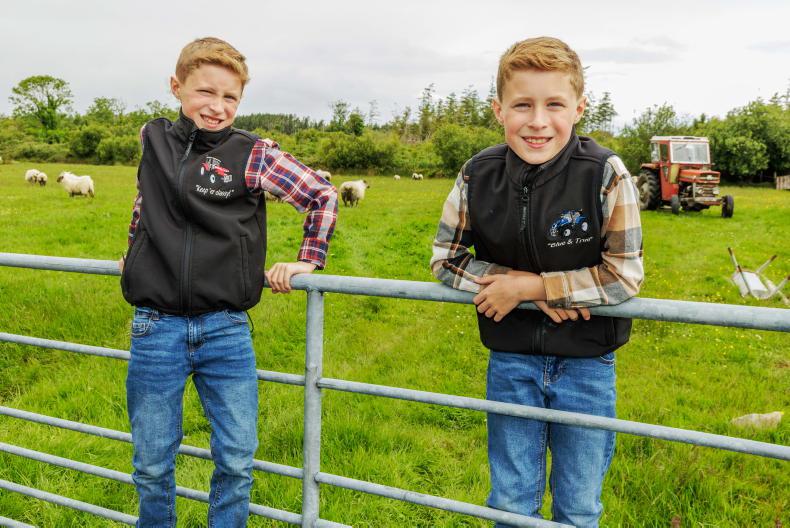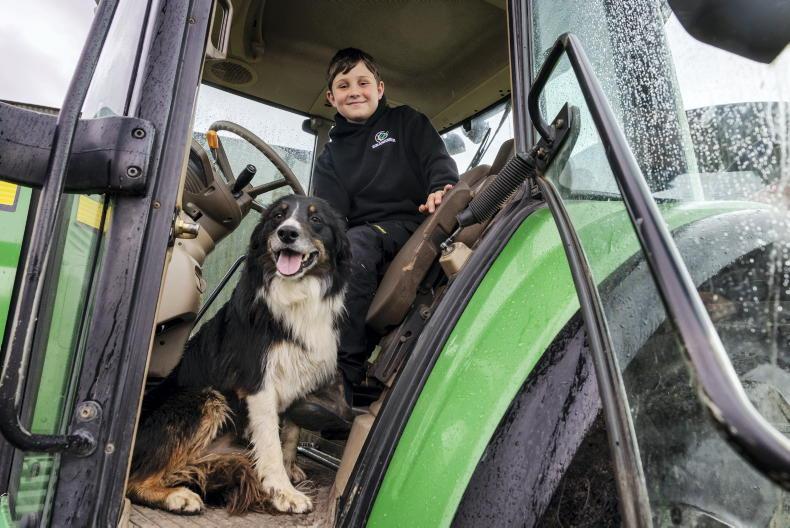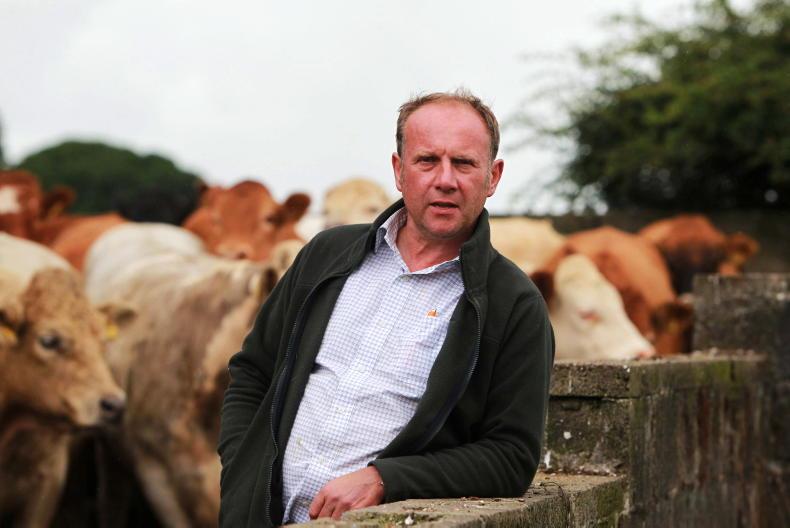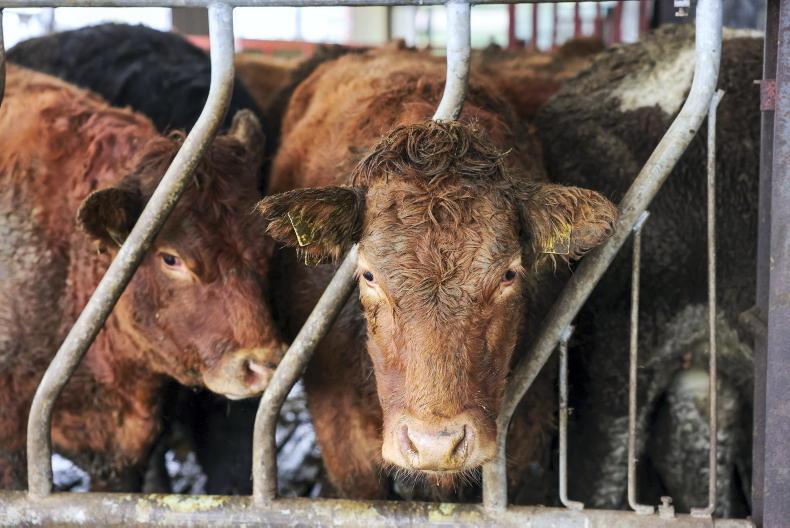During the winter months, which we are thankfully coming to the end of, farm animals are mainly brought inside into sheds. There are many reasons for this, but the main one is that grass, which is used to feed cattle and sheep for most of the year, stops growing over the winter months.
If these animals remained outside all winter, then there would be no grass in the spring time, when cows are calving and ewes are lambing, meaning farmers would need to reduce their stocking rates, or the numbers of cows and sheep they keep on their farm.
There are other places in the world where grass grows better over the winter months, but not in Ireland.
Farmers save the grass that grows during the summer months, to feed back to their animals during the winter. This saved grass is called silage
So, farmers save the grass that grows during the summer months to feed back to their animals during the winter. This saved grass is called silage. During May and June, grass grows at a much faster rate than the animals can eat it. This extra grass is cut and stored for the winter months.
It is very important that the grass is stored properly, otherwise it would just rot. When you cut the lawn and pile the grass up, if you dig into the pile after a couple of days you will see that the grass is turning brown – this means mould might be growing and the grass pile is getting really warm. This is not what we want to happen when silage is being made.
How it works
Silage is a type of pickled grass. The process works by reducing the pH of the grass (making it more acidic) to such an extent that any spoilage of the grass is stopped, and the grass is preserved and under the correct conditions, it is safely stored for months or even years.
What are the correct conditions? There are three key factors when it comes to making silage;
There needs to be the correct bacteria in the grass to turn it into silage.These bacteria need to have the right type of food to do their work. The grass/silage is stored in an airtight way.Let’s talk about the bacteria. These bacteria that are needed to convert the grass into silage are normally found on the surface of the grass plant itself, though sometimes bacteria are added in. Secondly, these bacteria need to have the right food to work on. The bacteria particularly like sugars. Farmers will try to cut silage in the afternoon of a sunny day. Sometimes they will test the grass before cutting it to make sure the grass has enough sugars to feed the bacteria.
Sugars are produced in the grass when the sun shines as a result of photosynthesis – that’s why it is best to mow grass in the afternoon, if possible.
Storage
When the grass is stored as silage, it is either covered by plastic in a silage pit or wrapped in plastic in silage bales. The idea here is to keep air, or more particularly oxygen, out of the silage.
The type of bacteria that make good silage grow best in the absence of oxygen and bacteria that spoil the silage. This is also the reason why tractors are used to roll silage pits, to squeeze the air out of the grass before putting on the plastic cover.
The type of bacteria is really important to the silage making process.
If it is wet when silage is being harvested, the grass can become contaminated with bacteria from the soil, and this too can result in bad-quality silage.
The whole idea with silage making is to have lots of sugar in the grass, so the bacteria can work quickly to produce acids that lower the pH of the grass and ultimately preserve the important nutrients in grass, especially protein.
If we can do this, we will make good-quality silage, though not always as good as grass when it comes to feeding our animals.
Read more
IFJ Junior: Do you call the mammary gland the udder or the elder?
Getting to know the basics of cereals
During the winter months, which we are thankfully coming to the end of, farm animals are mainly brought inside into sheds. There are many reasons for this, but the main one is that grass, which is used to feed cattle and sheep for most of the year, stops growing over the winter months.
If these animals remained outside all winter, then there would be no grass in the spring time, when cows are calving and ewes are lambing, meaning farmers would need to reduce their stocking rates, or the numbers of cows and sheep they keep on their farm.
There are other places in the world where grass grows better over the winter months, but not in Ireland.
Farmers save the grass that grows during the summer months, to feed back to their animals during the winter. This saved grass is called silage
So, farmers save the grass that grows during the summer months to feed back to their animals during the winter. This saved grass is called silage. During May and June, grass grows at a much faster rate than the animals can eat it. This extra grass is cut and stored for the winter months.
It is very important that the grass is stored properly, otherwise it would just rot. When you cut the lawn and pile the grass up, if you dig into the pile after a couple of days you will see that the grass is turning brown – this means mould might be growing and the grass pile is getting really warm. This is not what we want to happen when silage is being made.
How it works
Silage is a type of pickled grass. The process works by reducing the pH of the grass (making it more acidic) to such an extent that any spoilage of the grass is stopped, and the grass is preserved and under the correct conditions, it is safely stored for months or even years.
What are the correct conditions? There are three key factors when it comes to making silage;
There needs to be the correct bacteria in the grass to turn it into silage.These bacteria need to have the right type of food to do their work. The grass/silage is stored in an airtight way.Let’s talk about the bacteria. These bacteria that are needed to convert the grass into silage are normally found on the surface of the grass plant itself, though sometimes bacteria are added in. Secondly, these bacteria need to have the right food to work on. The bacteria particularly like sugars. Farmers will try to cut silage in the afternoon of a sunny day. Sometimes they will test the grass before cutting it to make sure the grass has enough sugars to feed the bacteria.
Sugars are produced in the grass when the sun shines as a result of photosynthesis – that’s why it is best to mow grass in the afternoon, if possible.
Storage
When the grass is stored as silage, it is either covered by plastic in a silage pit or wrapped in plastic in silage bales. The idea here is to keep air, or more particularly oxygen, out of the silage.
The type of bacteria that make good silage grow best in the absence of oxygen and bacteria that spoil the silage. This is also the reason why tractors are used to roll silage pits, to squeeze the air out of the grass before putting on the plastic cover.
The type of bacteria is really important to the silage making process.
If it is wet when silage is being harvested, the grass can become contaminated with bacteria from the soil, and this too can result in bad-quality silage.
The whole idea with silage making is to have lots of sugar in the grass, so the bacteria can work quickly to produce acids that lower the pH of the grass and ultimately preserve the important nutrients in grass, especially protein.
If we can do this, we will make good-quality silage, though not always as good as grass when it comes to feeding our animals.
Read more
IFJ Junior: Do you call the mammary gland the udder or the elder?
Getting to know the basics of cereals









SHARING OPTIONS